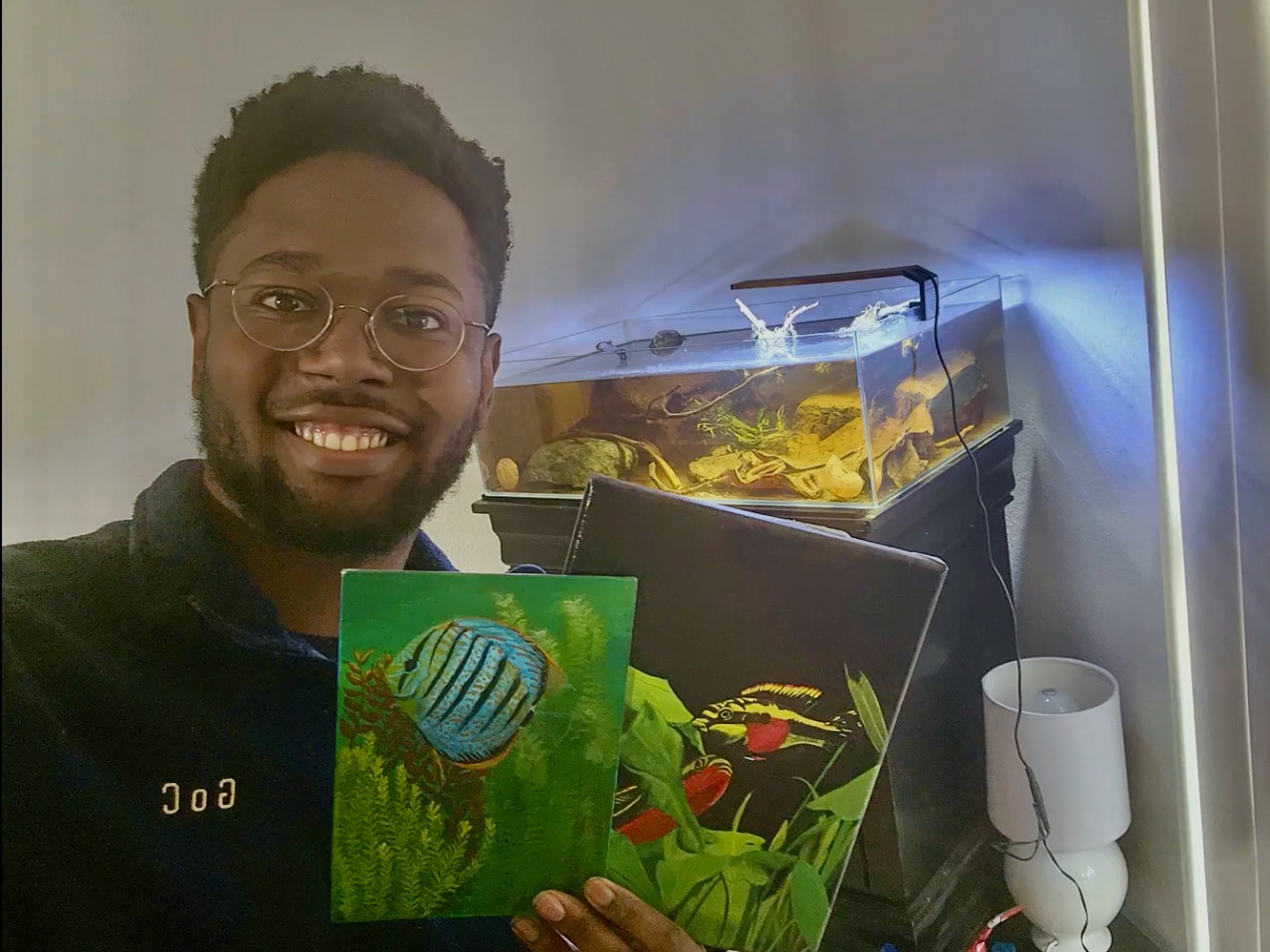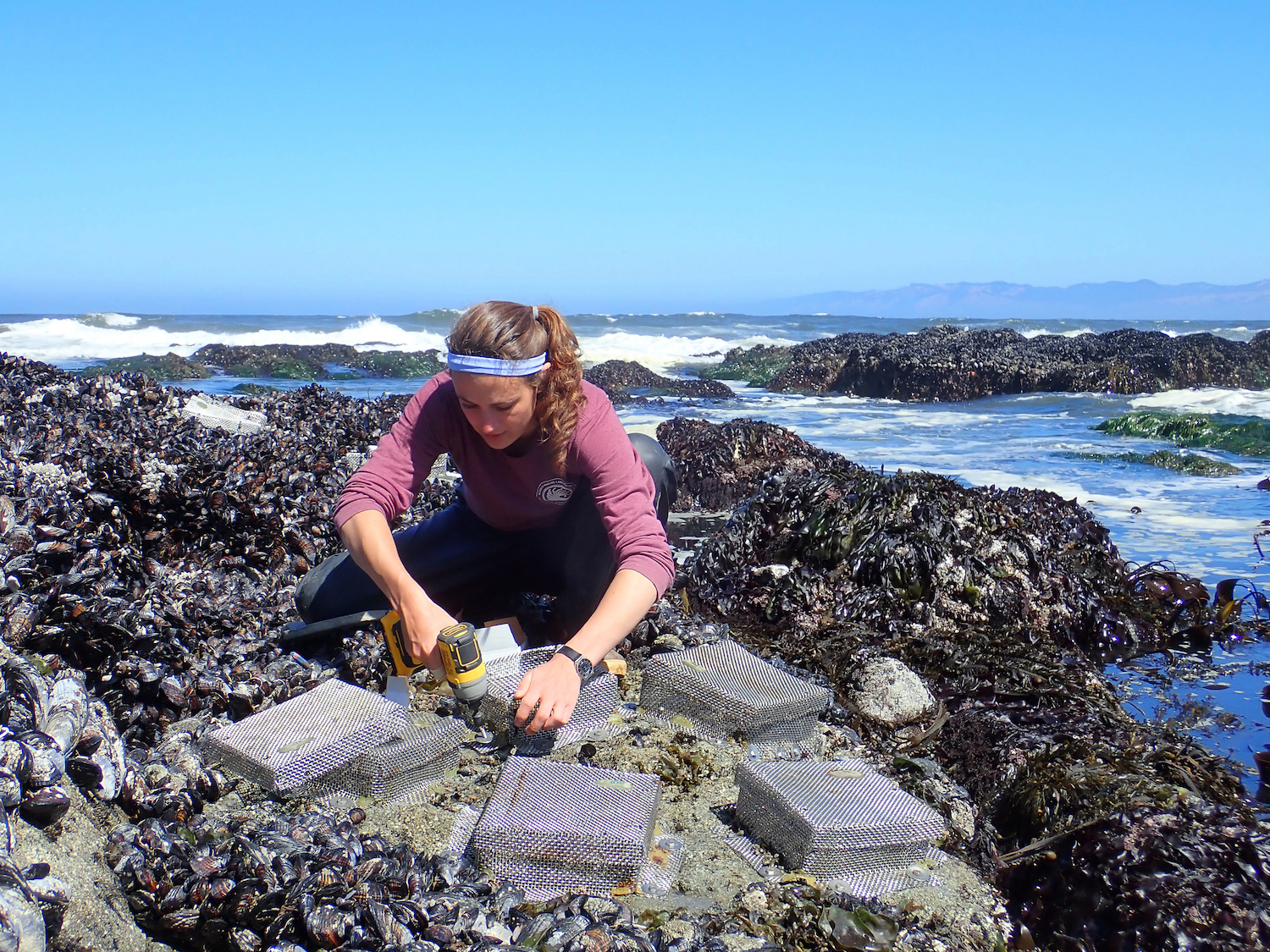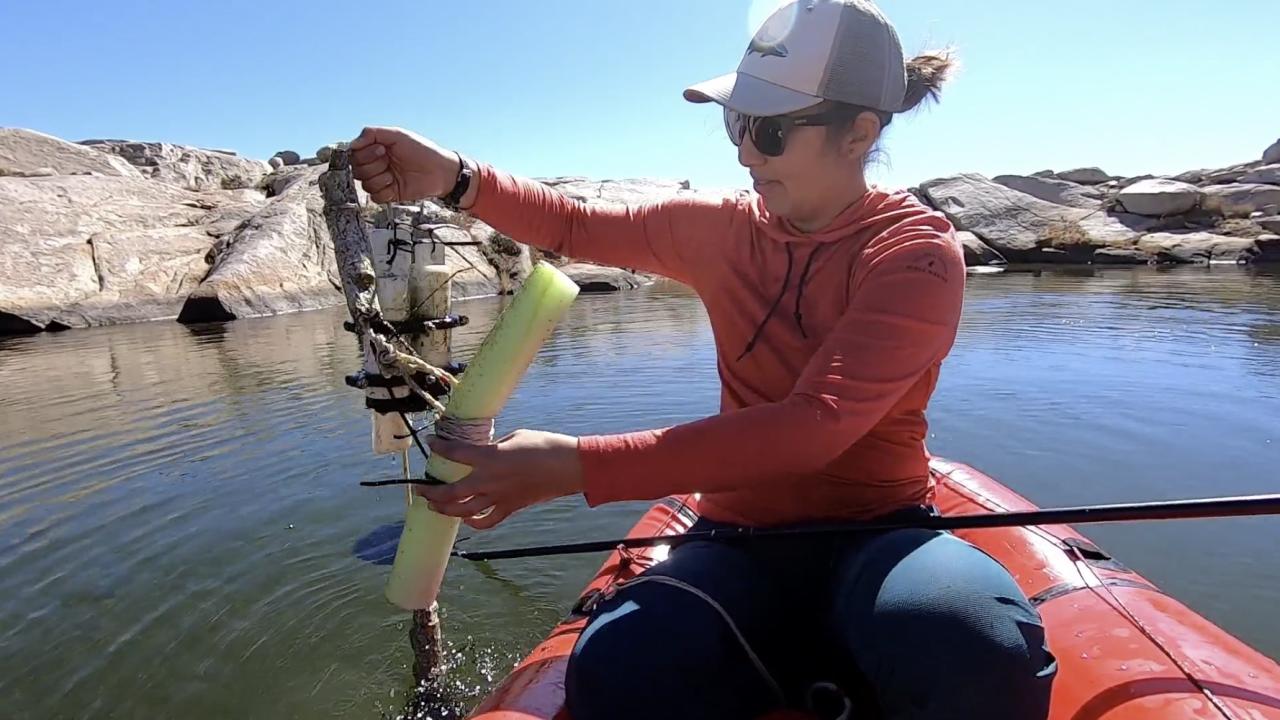From Chilean tidepools to the High Sierra, 12 UC Davis graduate students traveled the world this summer in search of answers to ecology’s most pressing questions.
In the blazing 100-degree Texas sun, Jon Aguiñaga waded through polluted waters on the side of freeways to capture tiny fish, which he then ran experiments on in the garage of an Airbnb. Marissa Sandoval flew to Florida to extract sexual-selection perfumes from the green inflorescent legs of orchid bees. MJ Farruggia trekked more than 1,000 miles in the Sierra backcountry for 240 days and is “still not tired of it.”

Watch all of the Ecology Film Fest films!
From tree rings and bee perfume to aquatic constellations, watch UC Davis graduate students bring their research to life through filmmaking.
Words alone are rarely enough to convey the vastness of the alpine or the sensation of trudging through contaminated waters. For many researchers, these stories are lost in scientific papers and rarely make it past the fleeting response to, “So, how’s work?”
The Ecology Film Festival, Thursday, Jan. 19, at Bodega Bay; and Wednesday, Feb. 1, in Davis (see box below for details), is one answer to that question for the graduate students who took part in UC Davis’ Scientific Filmmaking course this past fall. Both shows are free and open to the public.
“Ecology is visual,” said Emily Longman, a population biology Ph.D. candidate in Eric Sanford’s Bodega-based lab. “Ecologists observe nature and get inspired, and then ask questions in relation to what they’re seeing.”
That is why she teamed up with Sanford, professor of evolution and ecology, and professional adventure filmmaker Grant Thompson in creating ECL290/PBG298: Scientific Filmmaking.

Transcending the science paper
In the course, the dozen graduate students were trained in science communication and basic filmmaking, culminating in their short films highlighting their dissertation research. Classes ranged from creating captivating shots to discussions with professional science filmmakers and journalists — all aimed at bringing science to the public in a creative and digestible way.
AT A GLANCE
- Bodega Bay Screening
- Thursday, Jan. 19
- 6-7:30 p.m. (doors open 5:30 p.m.)
- Grange Hall, 1370 Bodega Ave.
- Davis Screening
- Wednesday, Feb. 1
- 5:30-7 p.m. (doors open 5 p.m.)
- Veterans Memorial Center Theatre, 203 E. 14th St.
Admission is free.
The barrier between science and the general public can be opaque. Scientists are trained to communicate primarily with other scientists, explained Sanford. Through storytelling, research transcends the journal article and throws viewers into the exciting power of science.
Many of these filmed settings reveal remote places that few ever get to explore. Graduate student Collin Gross’ footage is almost exclusively from the eye of the microscope, while Nina Venuti pans her camera down tree roots and up canopies to show the full vastness of her study ecosystem.
Ingredients for connection
“A good story, a human connection, and compelling visual images grab the attention of an audience, making even non-scientists naturally interested in learning more about your research and the environment,” Sanford said, noting that these three aspects are a recipe for public interest.
The ingredient of human connection and empathy is especially important to Longman. She didn’t want students to be limited to one type of film. Instead, she wanted to empower them to find approaches that work best for them and that made them the most passionate about their research.
For some, this meant centering their film on their personal attachment to their study systems and the sense of belonging they find in nature. To Tracie Hayes, it meant featuring abstract landscapes using color pencil in her film, illustrating things like nutrient cycling as well as the emotional impact her study system has on her.


“It’s not one medium,” Longman said. “Taking different approaches allows you to interact with different members of the public and increase awareness about ecology, climate change, and all these natural processes.”
Longman said the class owes a lot of its success to the Bilinski Fellowship, which aims to bridge the gap between the natural sciences and humanities using creative and innovative approaches. The Scientific Filmmaking course does just that. After being awarded a Bilinski Fellowship for the class, Longman was able to expand the course and give students the opportunity to present two film festival events.
“People who turn out for the Ecology Film Festival are in for a real treat,” Sanford said. “The work of these UC Davis students reflects the dynamic combination of skills found in many of the next generation of ecologists — students who are both outstanding scientists and outstanding communicators.”
Malia Reiss is a science news intern with UC Davis Strategic Communications. She studies environmental science and management at UC Davis.
Media Resources
For questions about the Ecology Film Festival, please contact Emily Longman by email.
